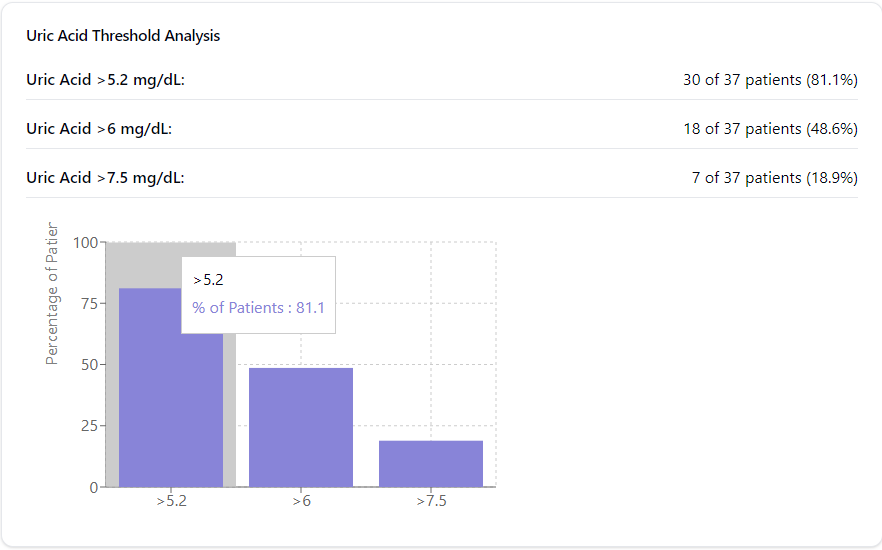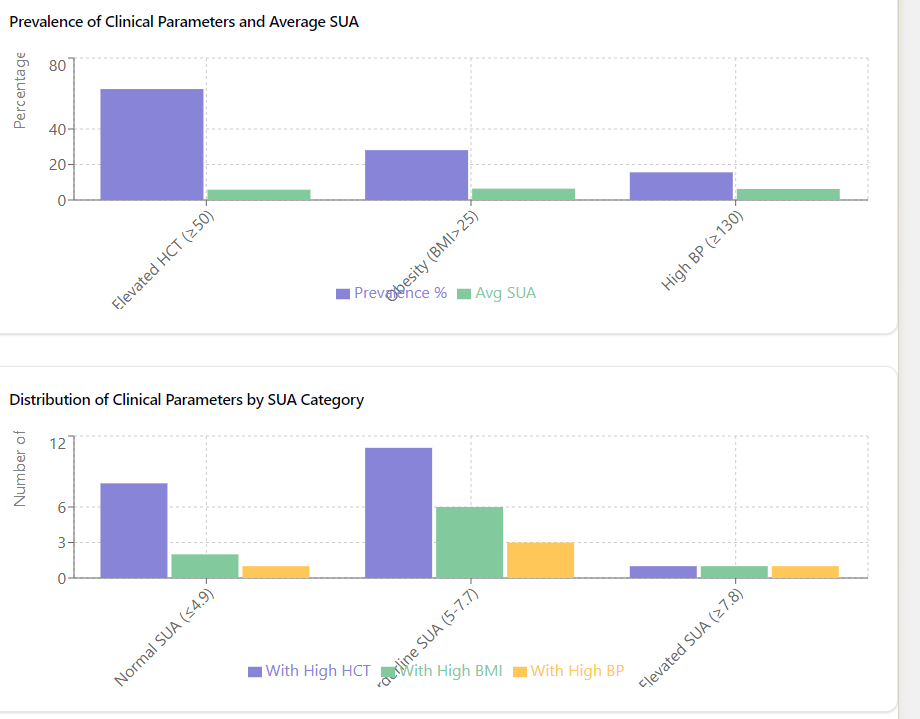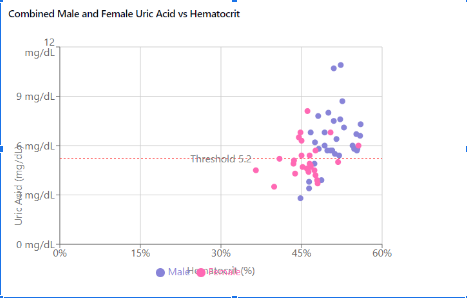Nephrology 5
Session: Nephrology 5
624 - Hyperuricemia and Gout in Adolescents at Altitude
Sunday, April 27, 2025
8:30am - 10:45am HST
Publication Number: 624.5343
Jared A. Martin, Rocky Vista University School of Osteopathic Medicine, Tewksbury, MA, United States; Carter S. Odean, Rocky Vista University School of Osteopathic Medicine, Denver, CO, United States; Eliaz T. Lynch, Rocky Vista University School of Osteopathic Medicine, Billings, MT, United States; Christine A. Ebert-Santos, Ebert Family Clinic, Frisco, CO, United States; Daniel I. Feig, University of Alabama School of Medicine, Mountain Brook, AL, United States; Richard Johnson, University of Colorado School of Medicine, Aurora, CO, United States

Jared A. Martin (he/him/his)
Medical Student
Rocky Vista University School of Osteopathic Medicine
Tewksbury, Massachusetts, United States
Presenting Author(s)
Background: Elevated serum uric acid level is associated with hypertension, hyperlipidemia, microproteinuria, vascular insufficiency, and diabetes mellitus. High altitude residence and hypoxia are risk factors for hyperuricemia. Genetic predisposition, diet, elevated body mass index and sleep apnea all contribute to a decrease in oxyhemoglobin saturation with an increase in reactive oxidative species. Because four young men presenting with gout as teenagers developed joint destruction, one of whom resulting in bilateral amputations, we propose that awareness of the risks for malignant gout at altitude in adolescents may lead to early detection and treatment to improve outcomes and prevent disability.
Objective: Awareness of the risks for malignant gout at altitude in adolescents can lead to early detection and treatment to improve outcomes and prevent disability.
Design/Methods: Adolescents ages 12 to 20 presenting for routine care at Ebert Family Clinic are screened for diabetes, lipids, thyroid, comprehensive metabolic panel, complete blood count, and sexually transmitted diseases. Uric acid was added in January 2024 due to the risks to these patients living in a hypoxic environment. Complete data (uric acid, hematocrit, HbA1c, renal and liver function panels, BMI, blood pressure, physical symptoms of joint pain) were available on 80 patients. Elevated serum uric acid was defined as ≥ 5.2mg/dL (ref Feig). Elevated systolic blood pressure being greater than 130, and polycythemia being a hematocrit greater than 50.
Results: 80 consecutive patients in 2024 were included in the analysis, with 50% identifying as male. The prevalence of hyperuricemia is 33%, with a cutoff of 5.2mg/dL. Two teens with active gout had transient elevations of serum creatinine to 1.04/1.03. The prevalence of elevated hematocrit was 62.5% of all cases.
Conclusion(s): Elevated uric acid levels are prevalent in a significant portion of adolescents at high altitudes, potentially due to hypoxia, genetic predisposition, and lifestyle factors. This elevated rate of hyperuricemia is more than triple as compared to lower altitude populations. The data highlights an association of hyperuricemia with other metabolic and cardiovascular risk factors, reinforcing the need for early detection and intervention in adolescents. Regular screening for hyperuricemia, especially in hypoxic environments, may prevent progression to joint destruction and disability.
Serum Uric Acid Threshold Levels in Male Patients at Altitude
 There is a slight positive correlation between uric acid and hematocrit. A significant portion of male patients (n = 37) have uric acid levels above a 5.2 mg/dL threshold.
There is a slight positive correlation between uric acid and hematocrit. A significant portion of male patients (n = 37) have uric acid levels above a 5.2 mg/dL threshold.Prevalence of Elevated Blood Pressure, Polycythemia, and BMI in Relation to Hyperuricemia at Altitude
 The prevalence of elevated hematocrit (HCT ≥ 50) was 62.5% of all cases; the prevalence of obesity (BMI > 25) was 28.1% of all cases; the prevalence of elevated systolic blood pressure ≥ 130 was 15.6% of all cases. The strongest correlation was between hyperuricemia and elevated BMI (r = 0.42, p < 0.05).
The prevalence of elevated hematocrit (HCT ≥ 50) was 62.5% of all cases; the prevalence of obesity (BMI > 25) was 28.1% of all cases; the prevalence of elevated systolic blood pressure ≥ 130 was 15.6% of all cases. The strongest correlation was between hyperuricemia and elevated BMI (r = 0.42, p < 0.05).Uric Acid Levels Compared with Hematocrit Levels at Altitude
 Data from adolescent patients at altitude (n = 80) demonstrate polycythemia and hyperuricemia, with 5.2 mg/dL as the threshold for hyperuricemia.
Data from adolescent patients at altitude (n = 80) demonstrate polycythemia and hyperuricemia, with 5.2 mg/dL as the threshold for hyperuricemia.
